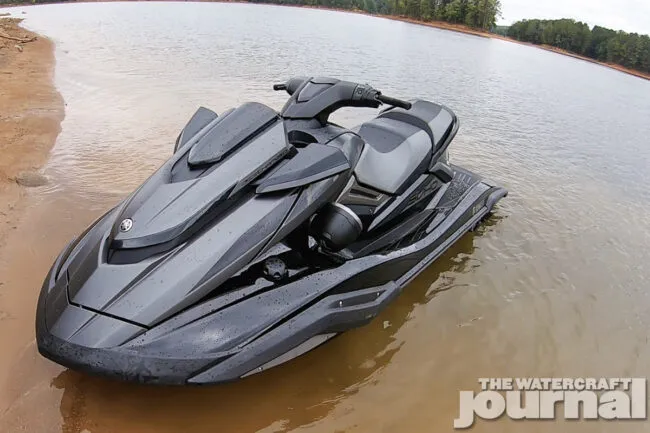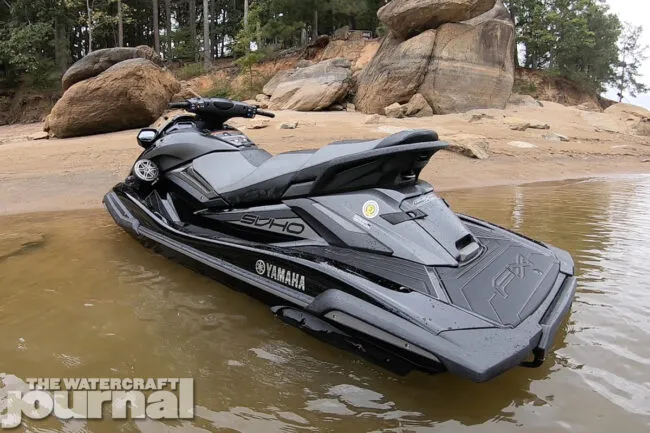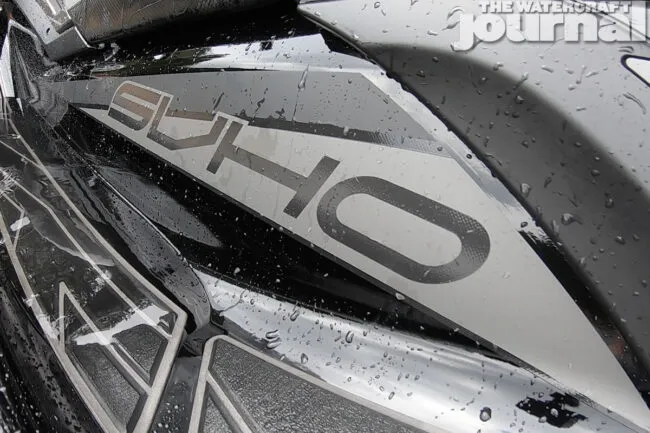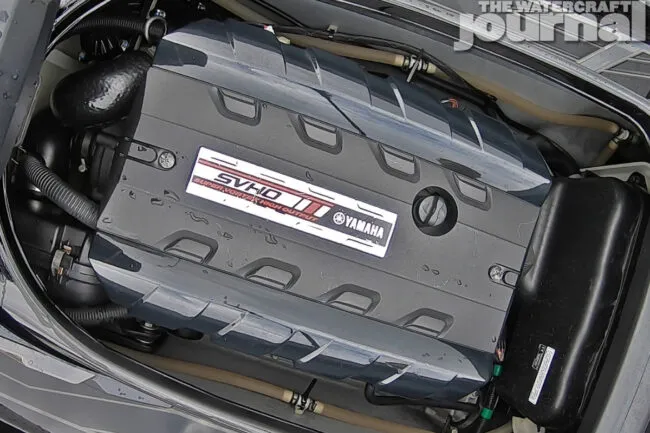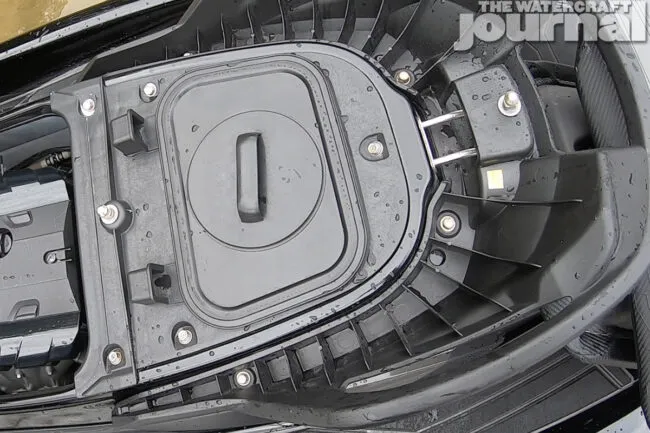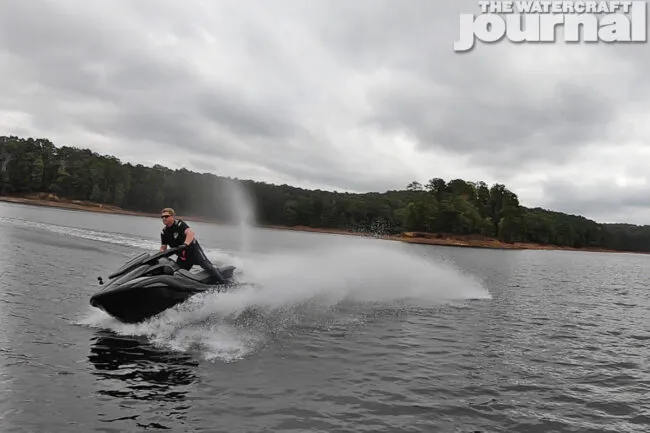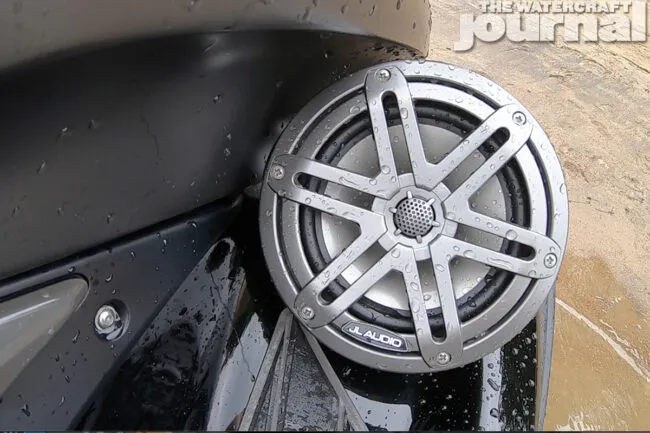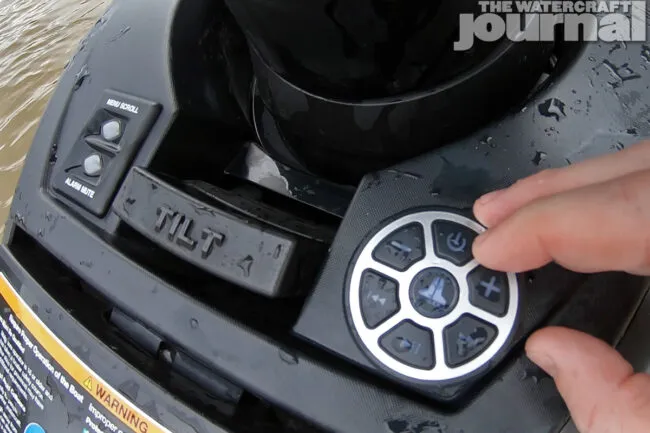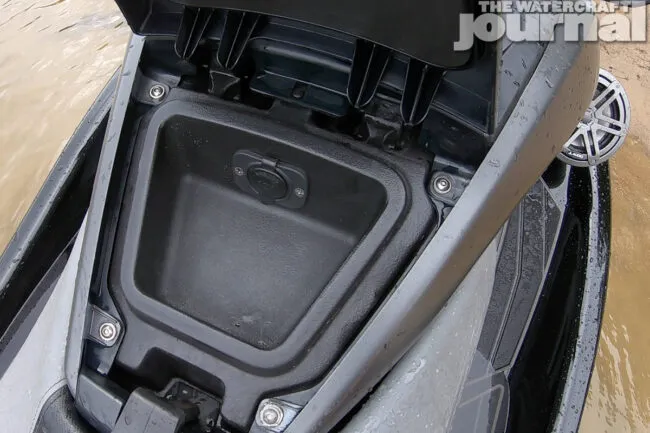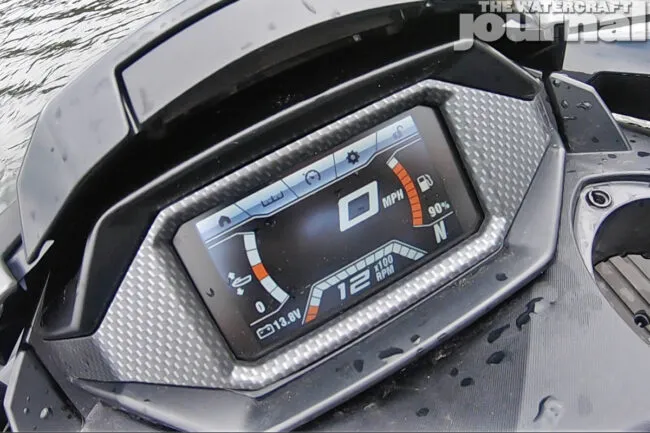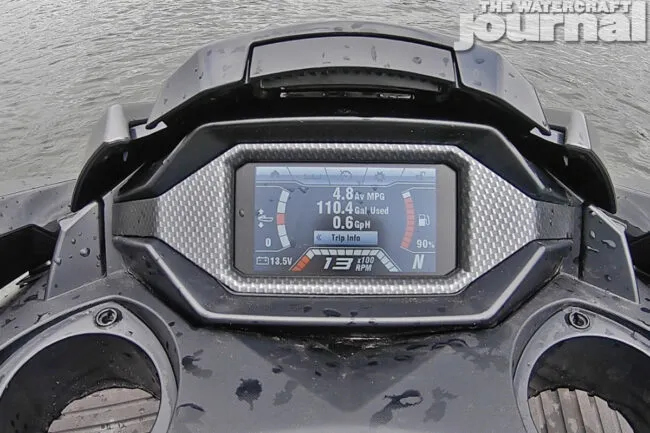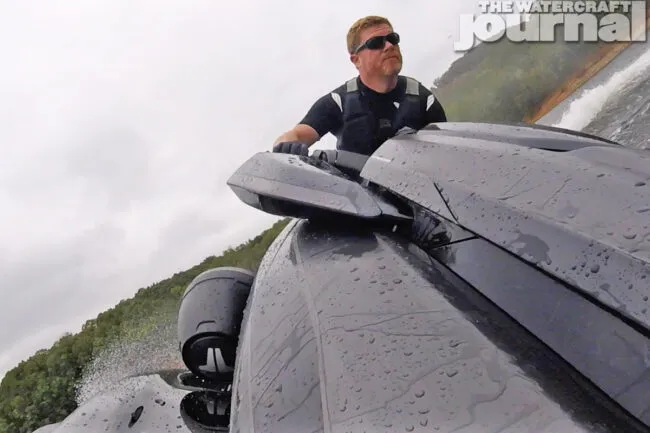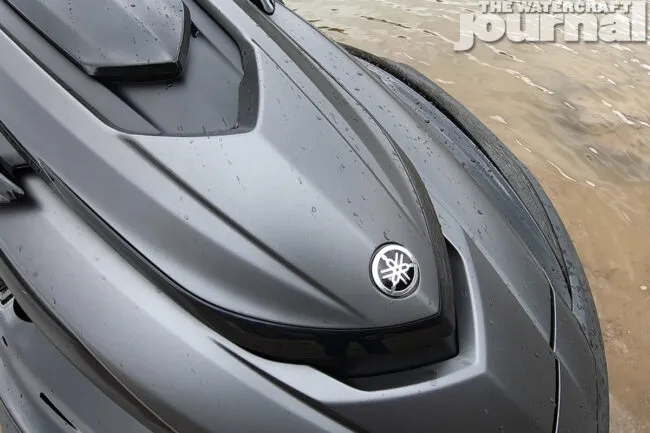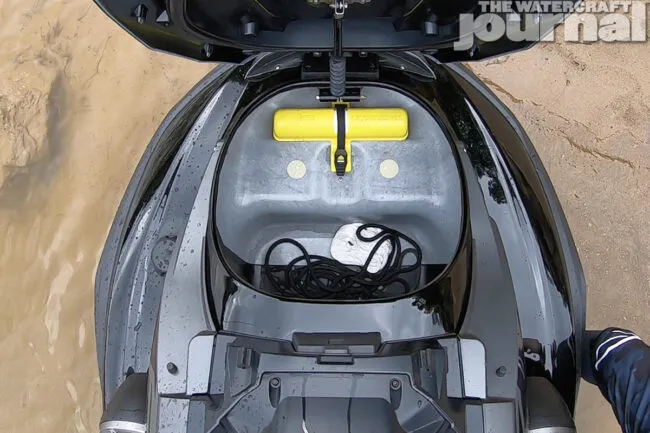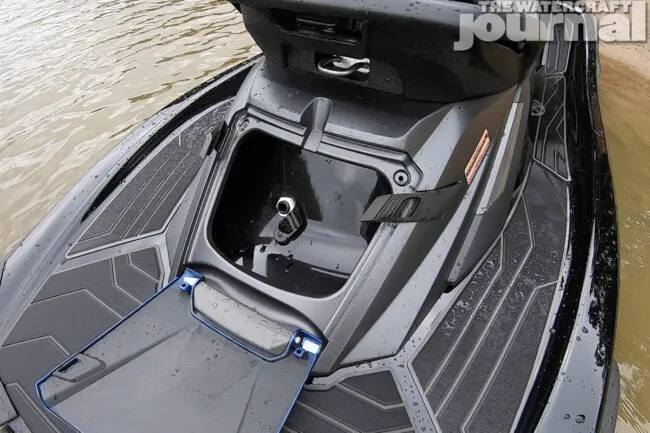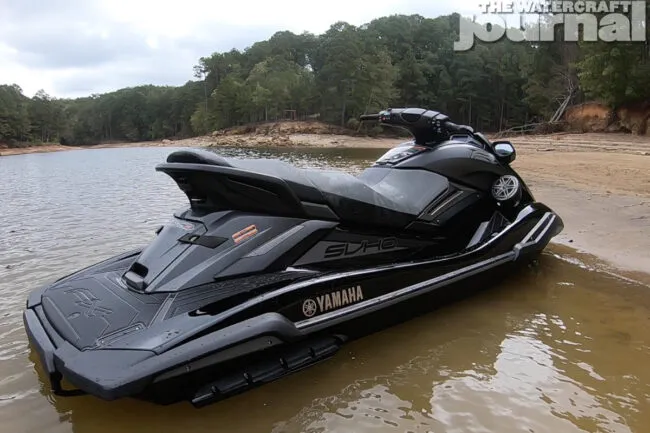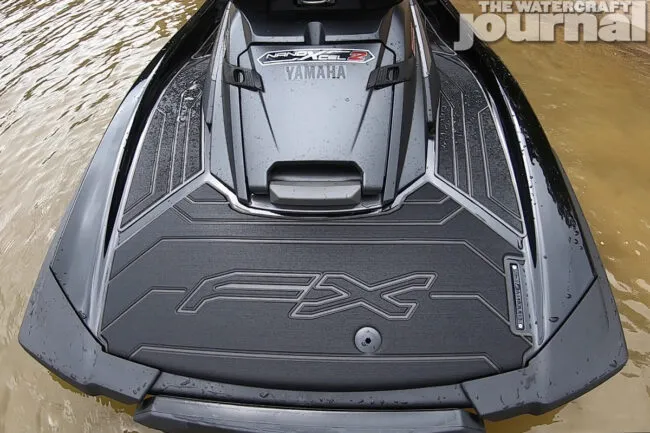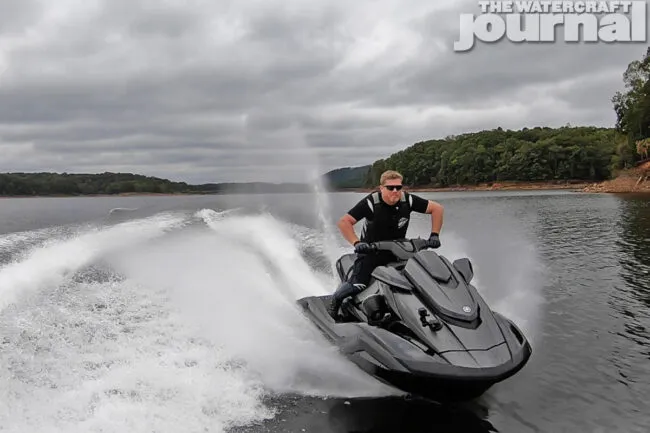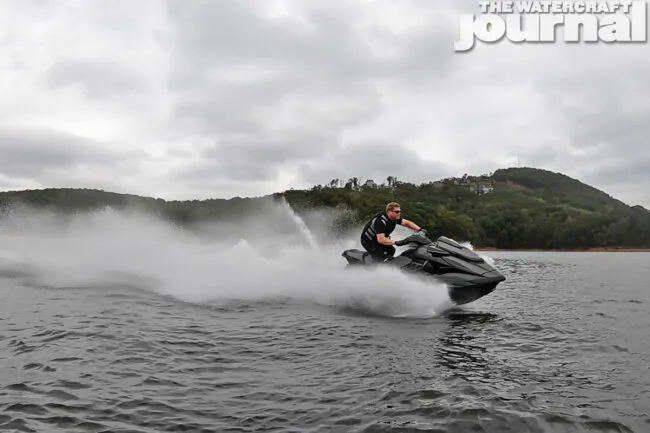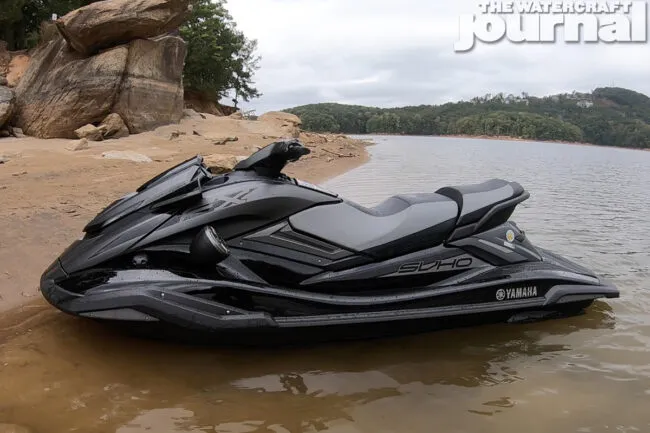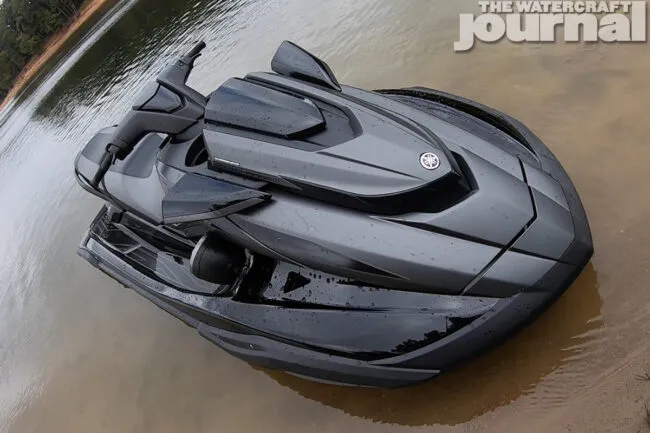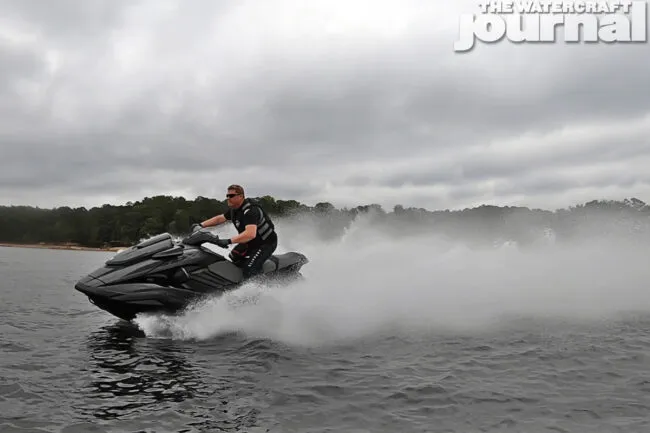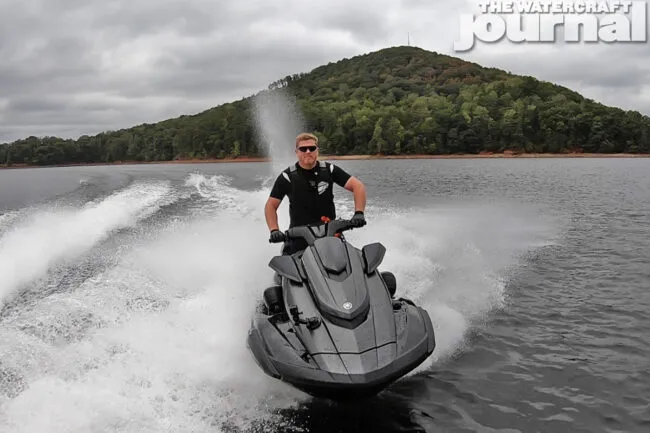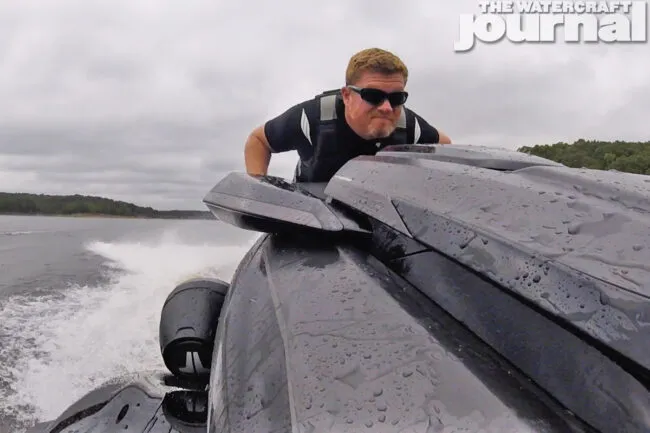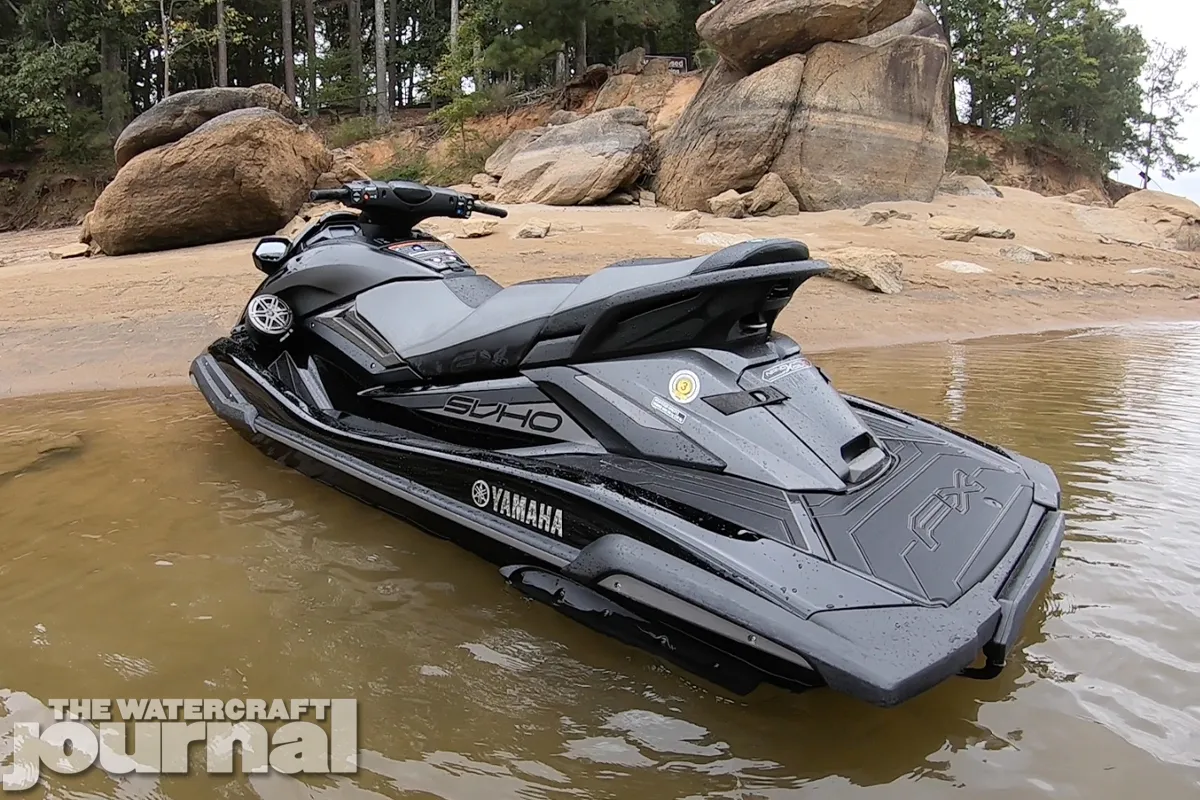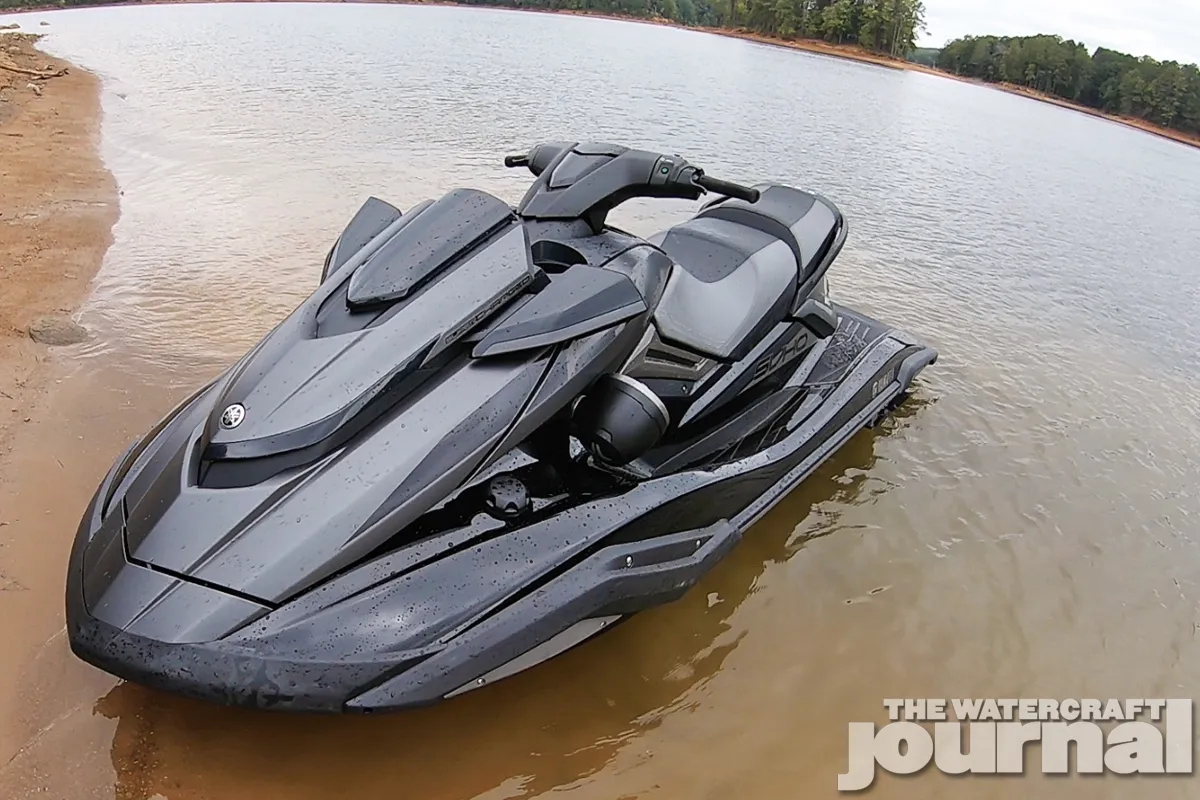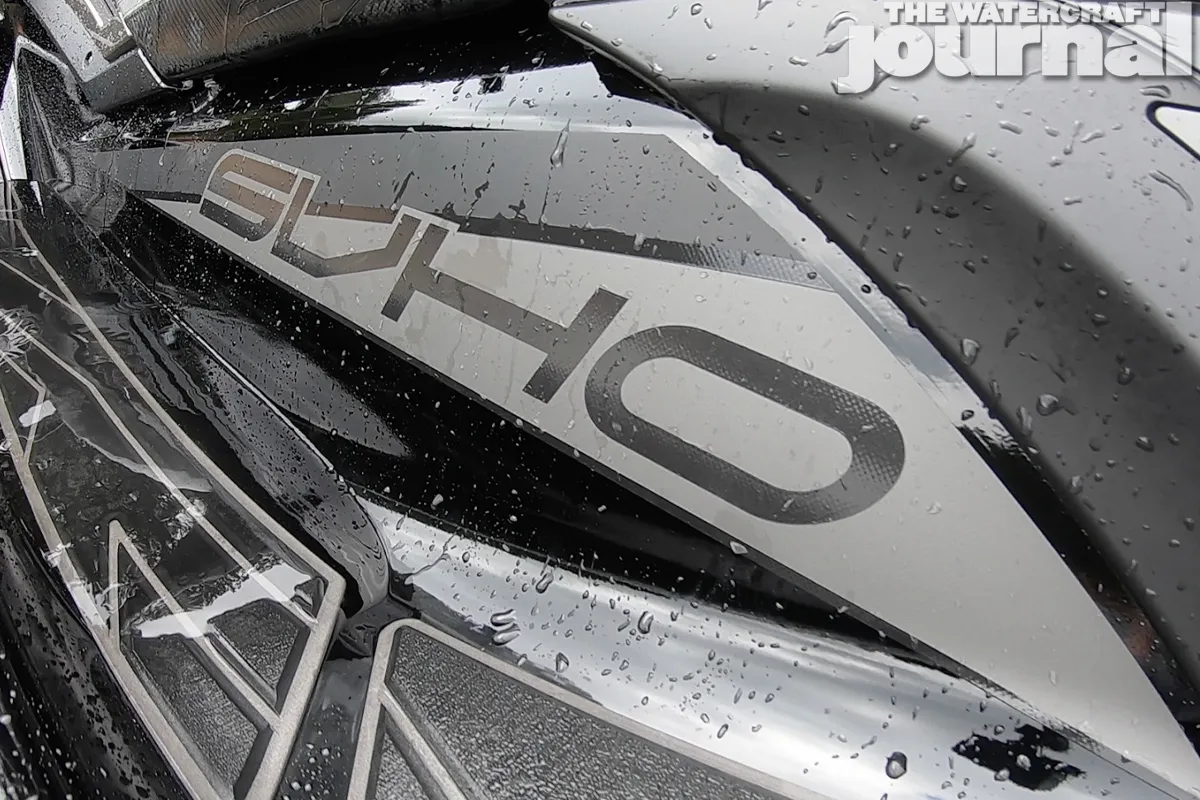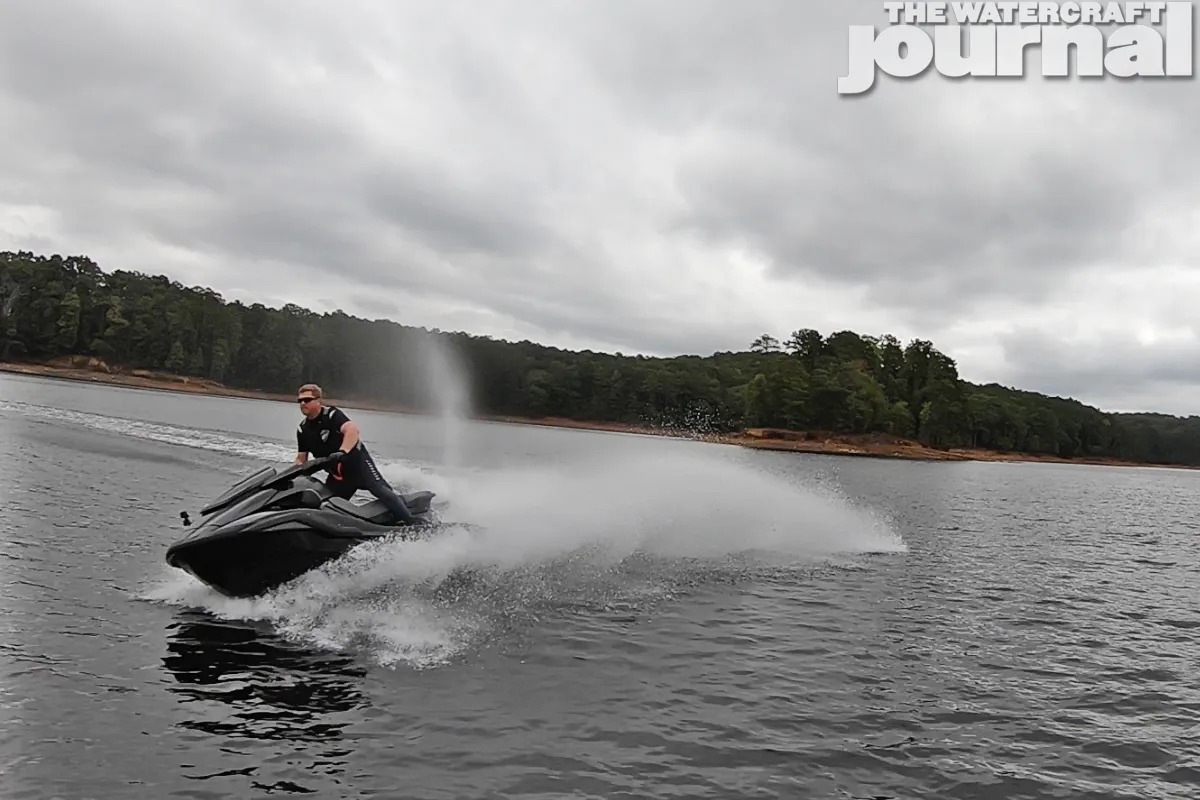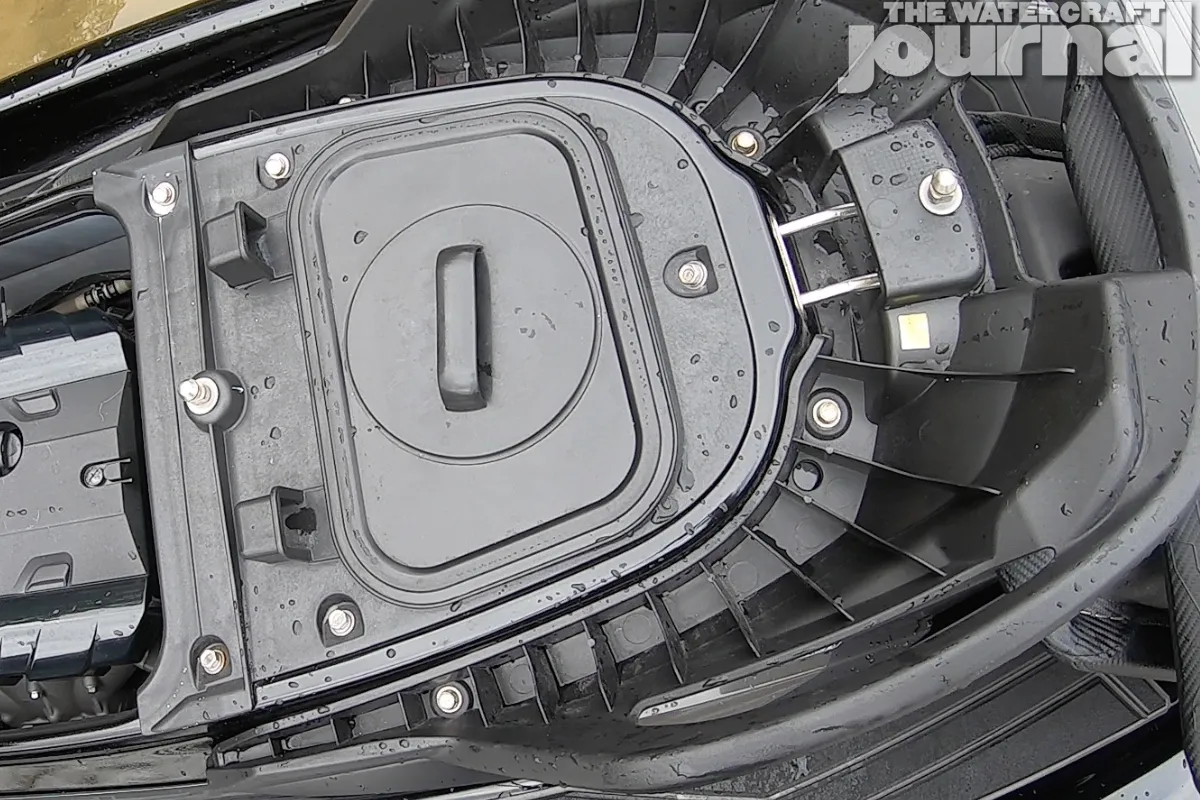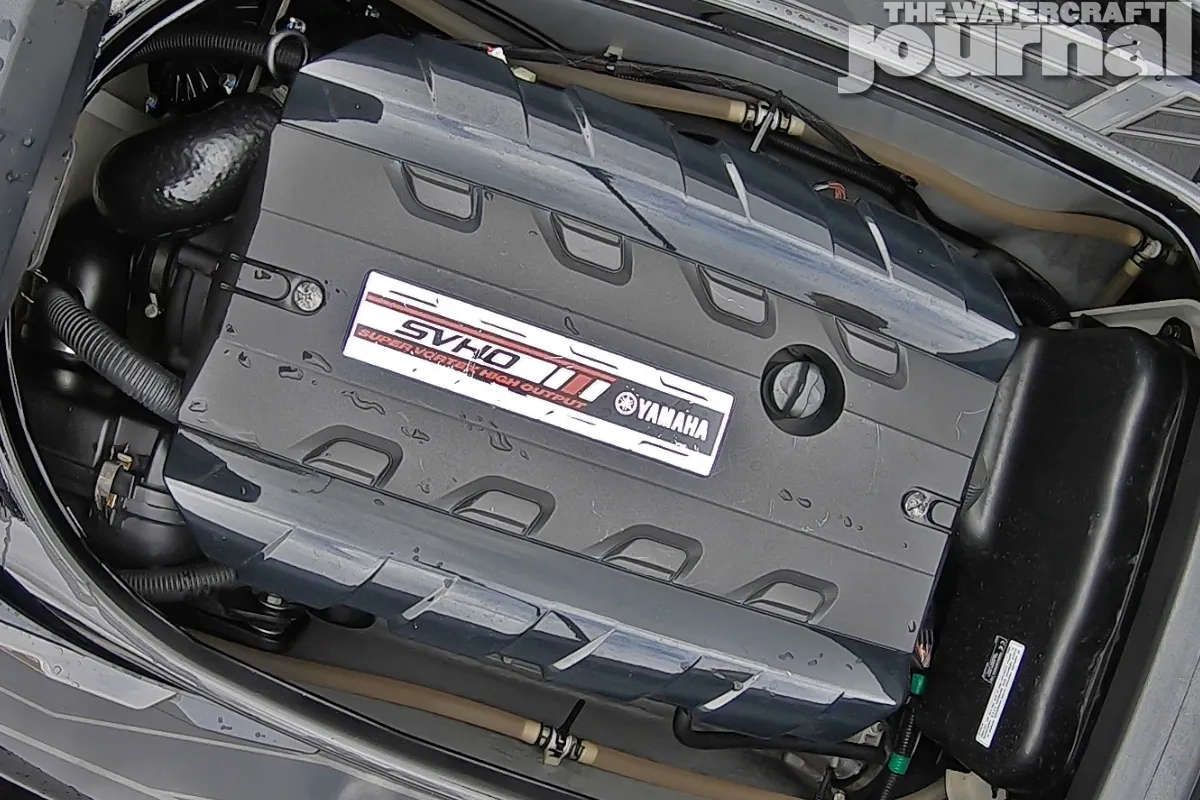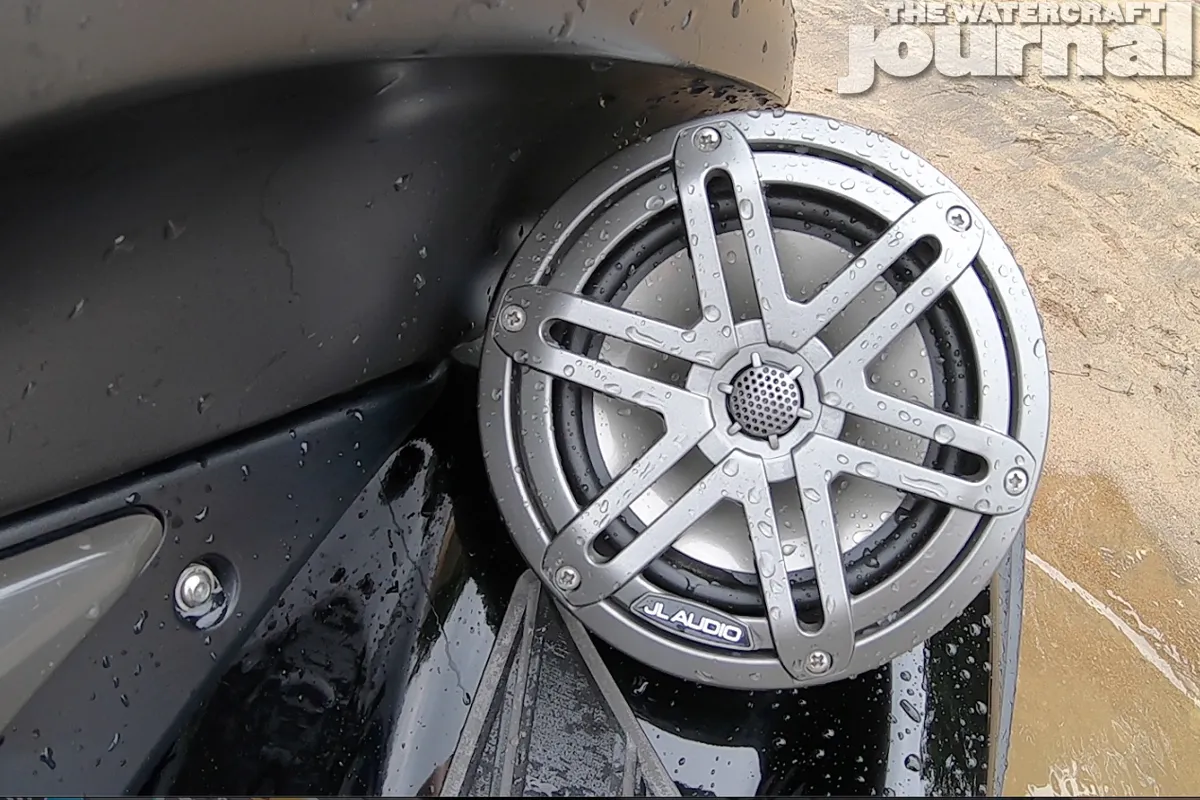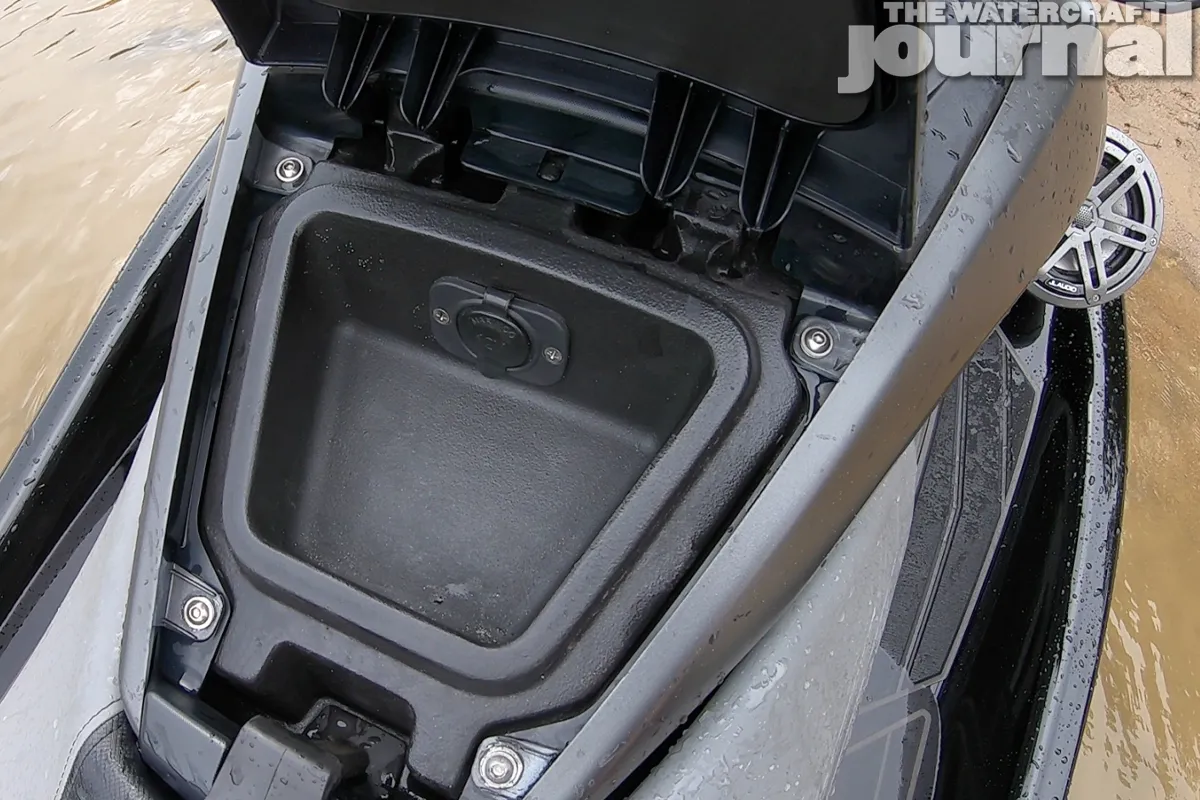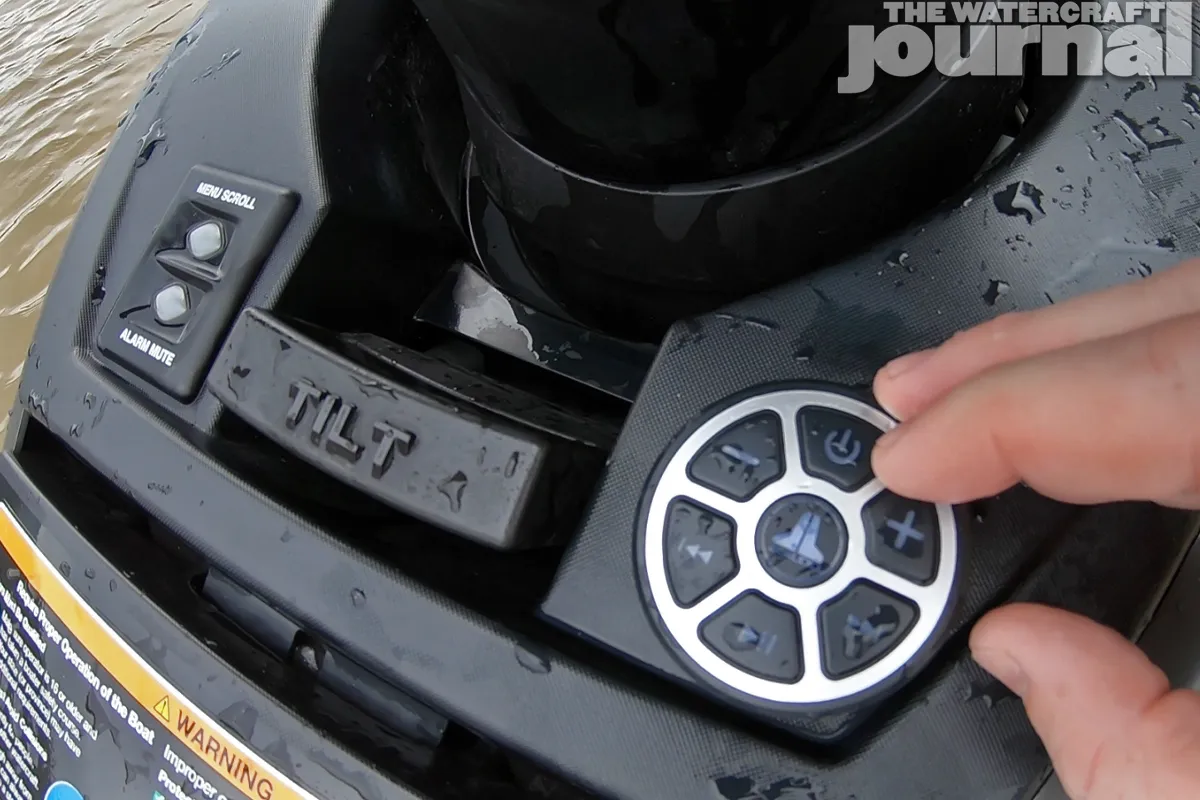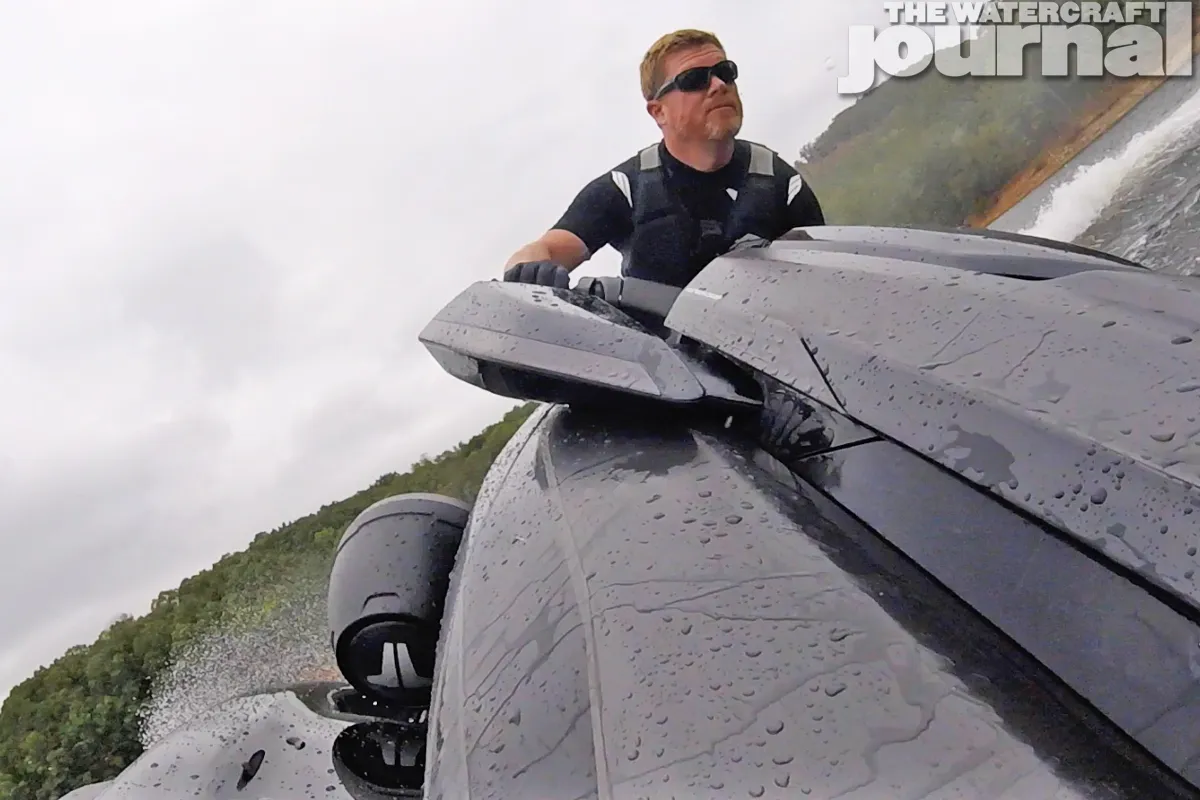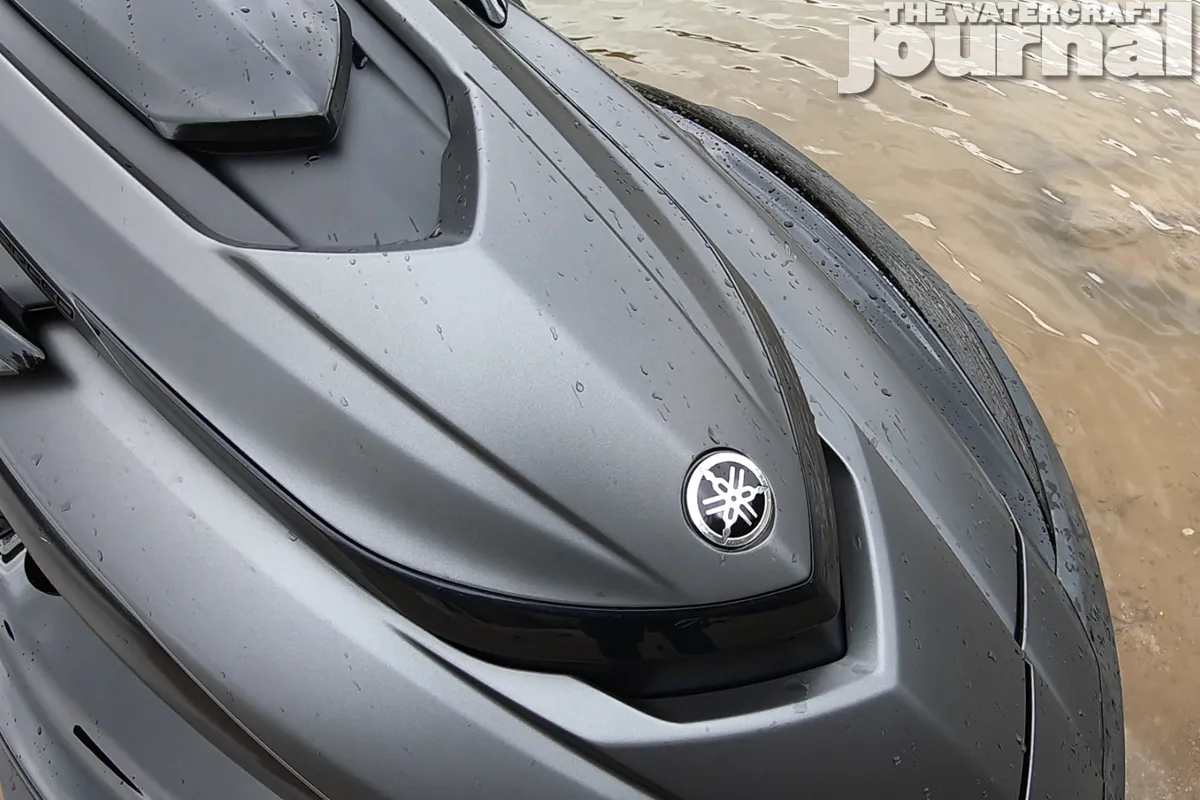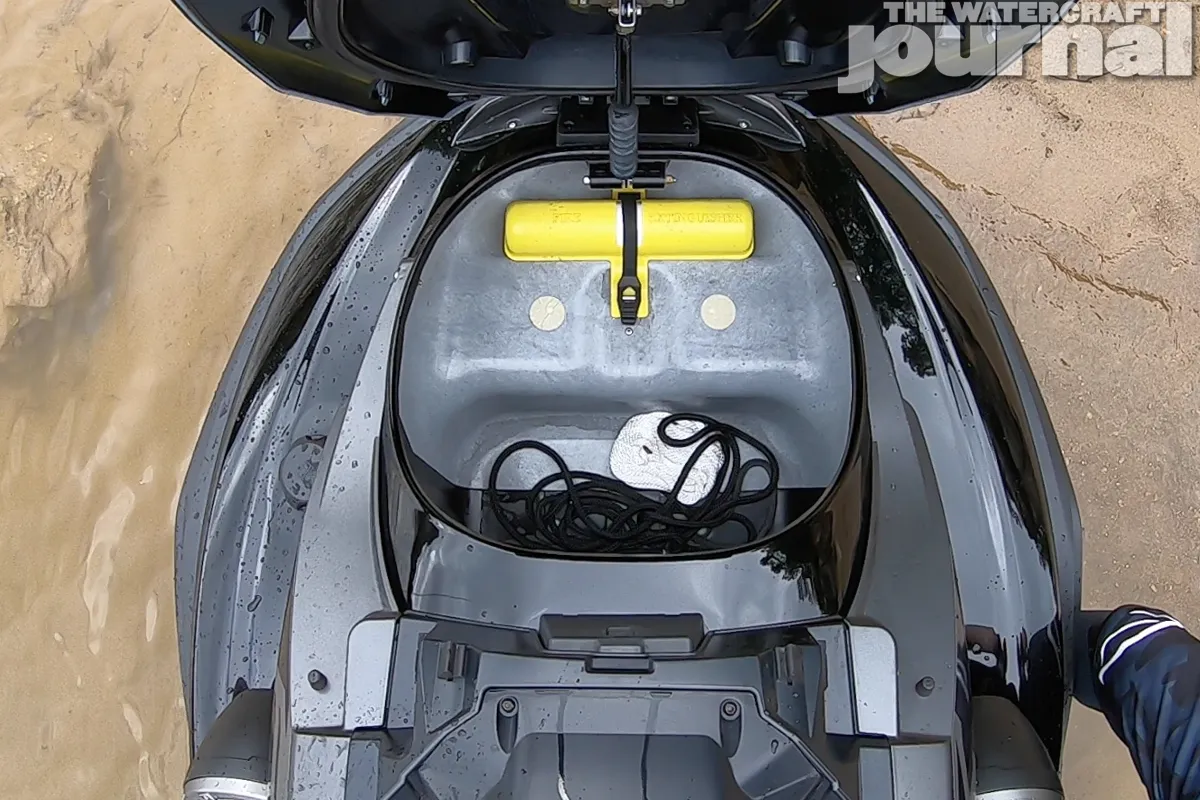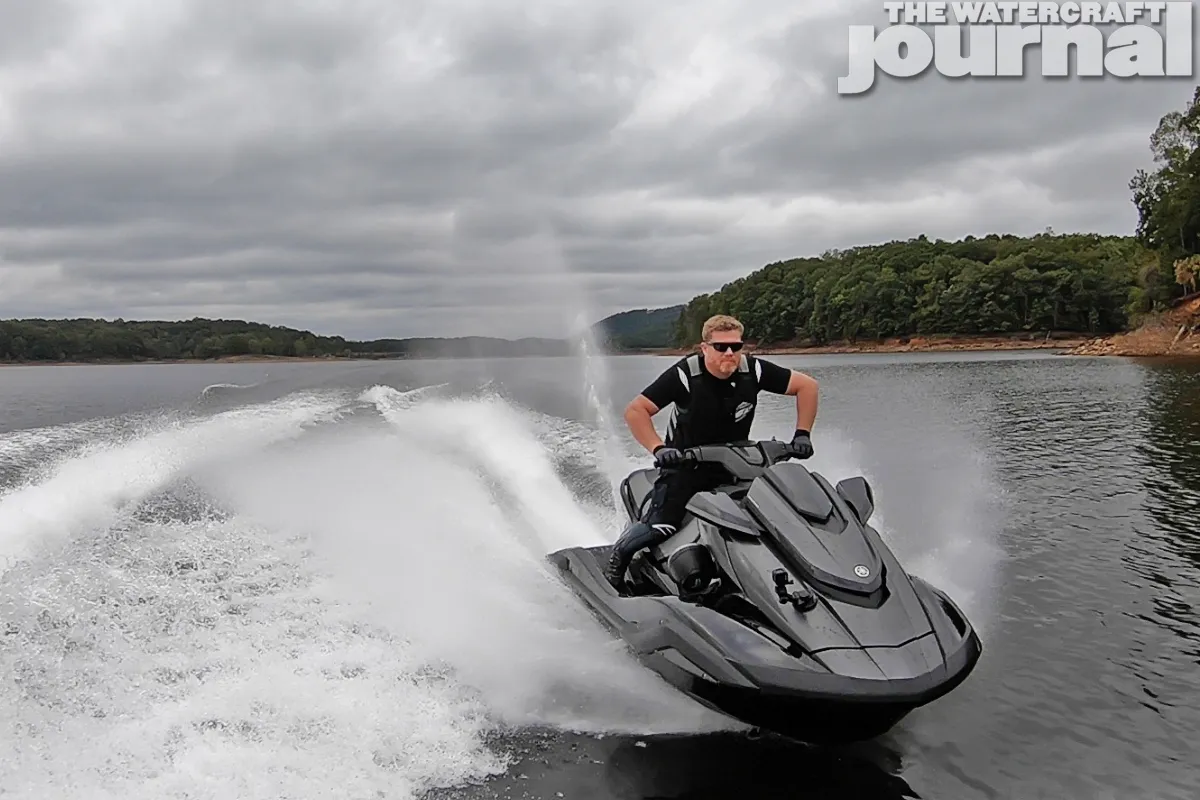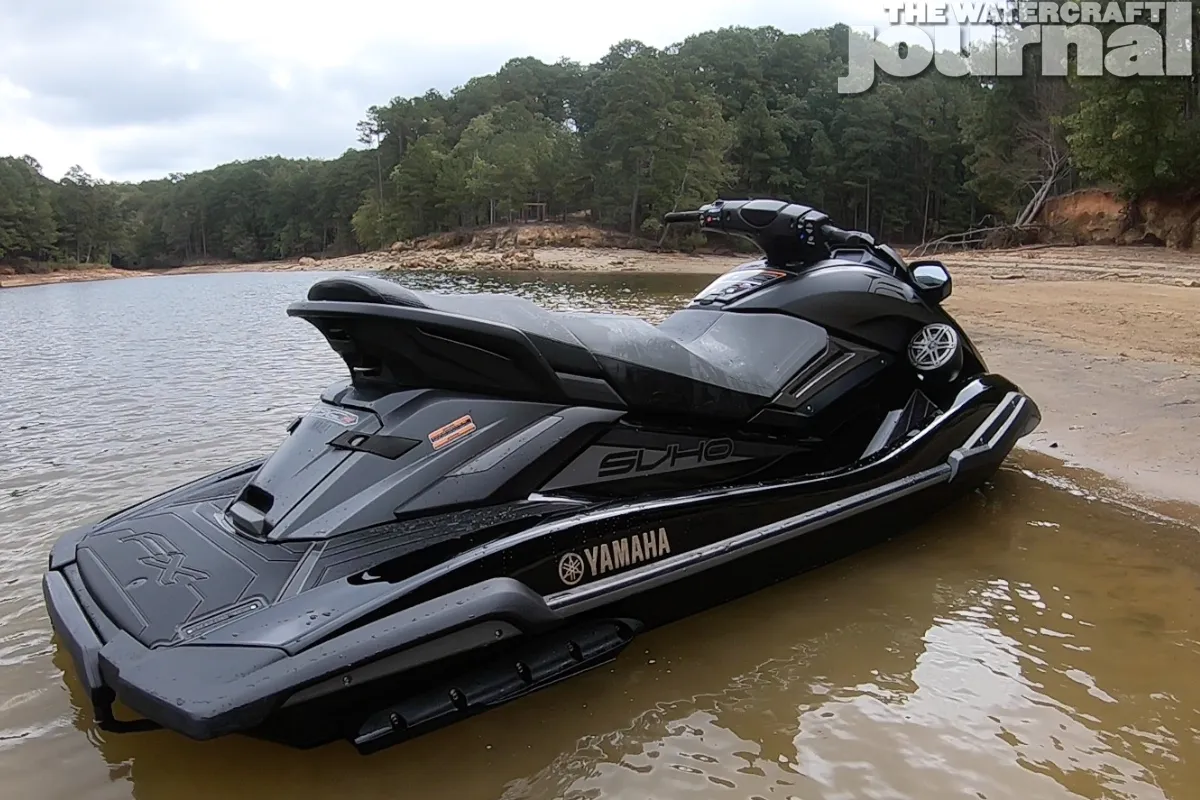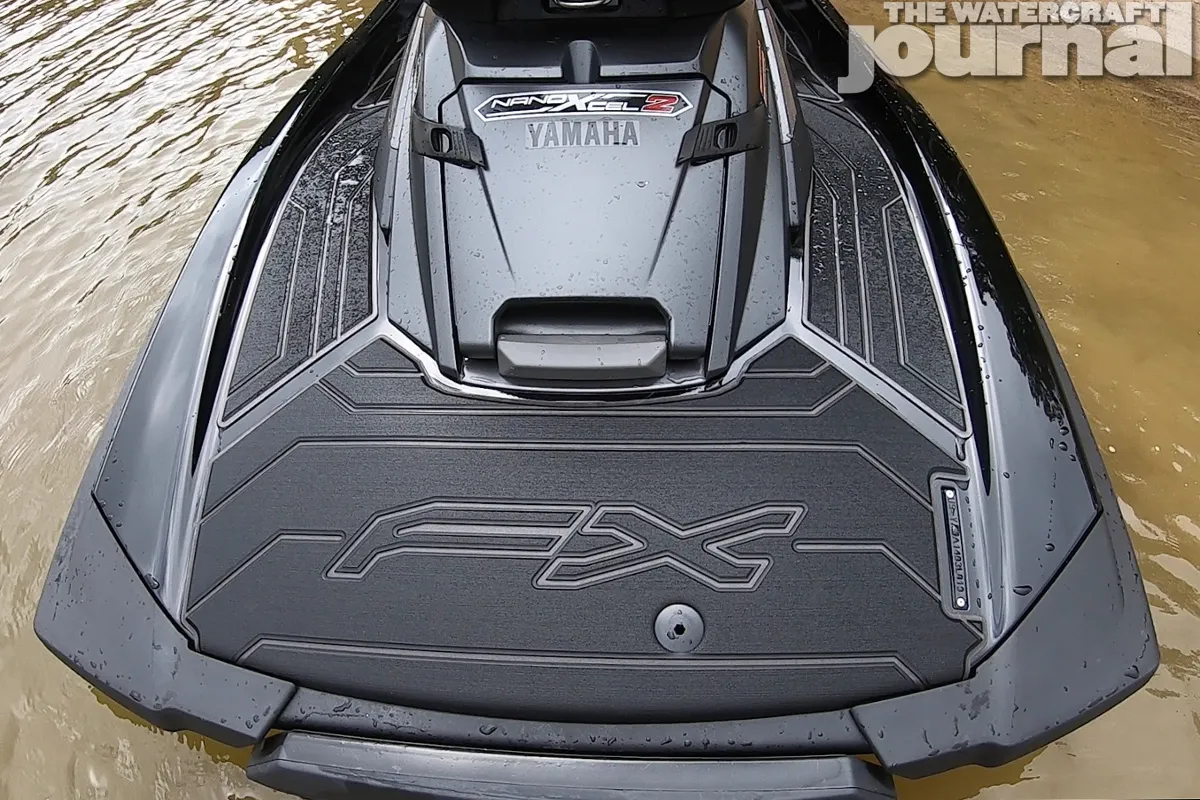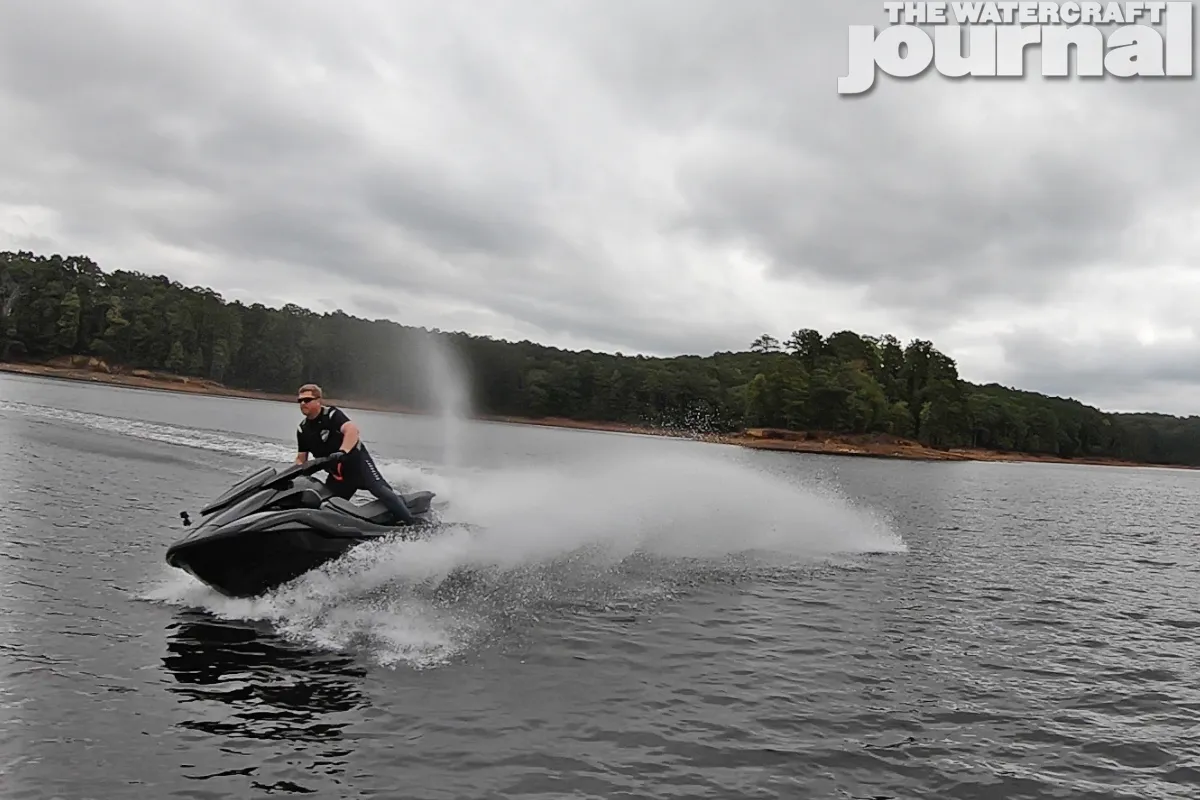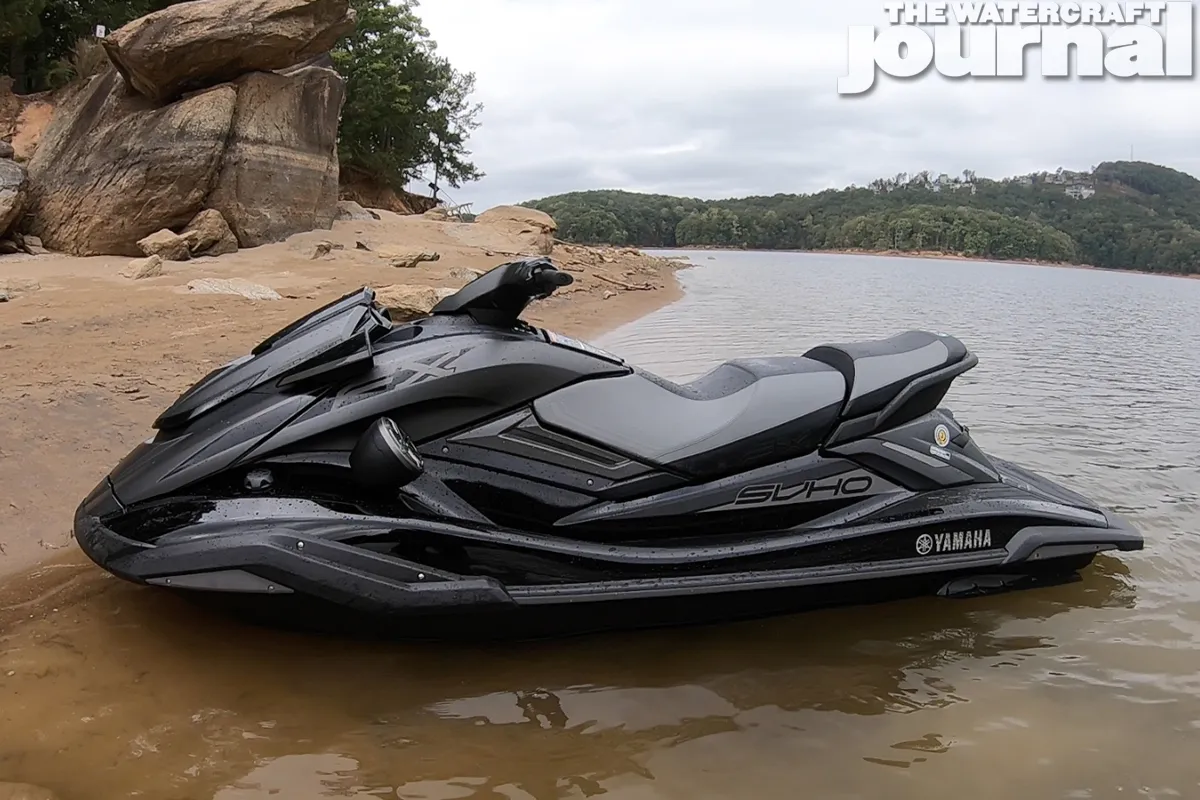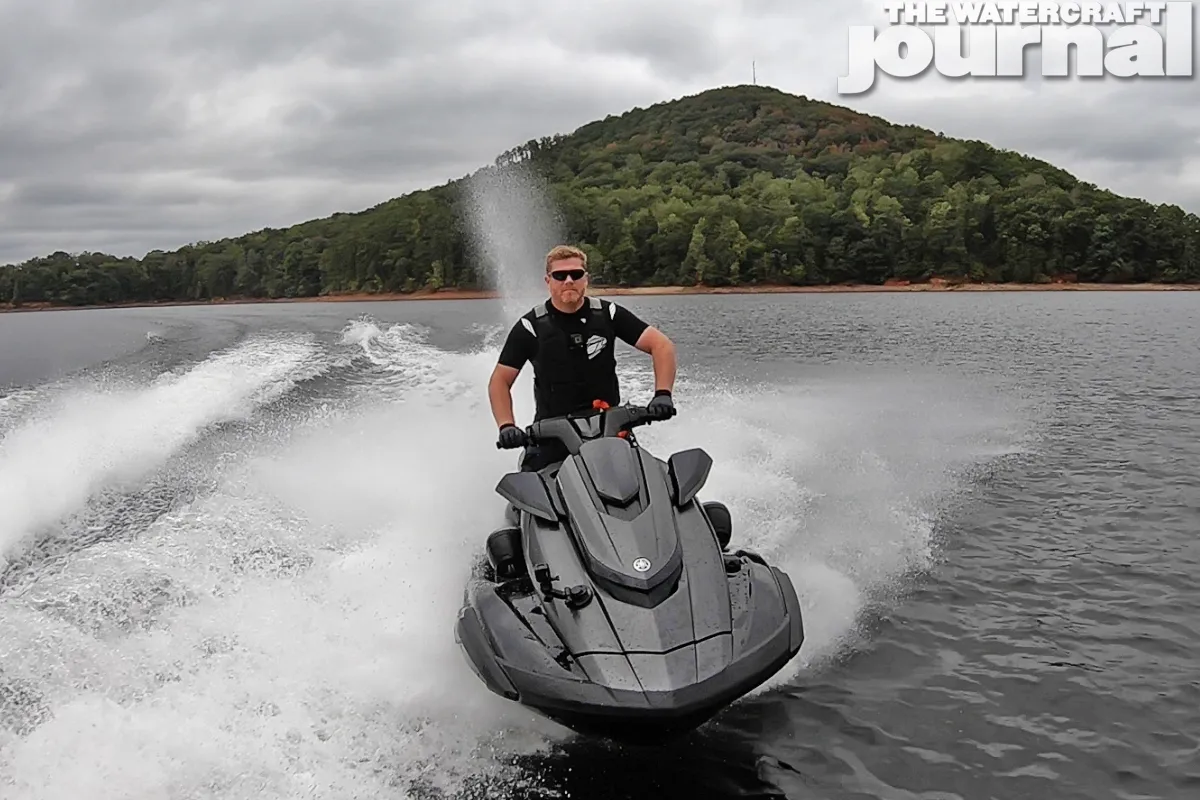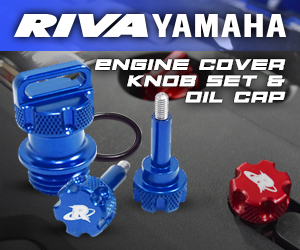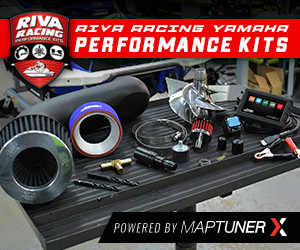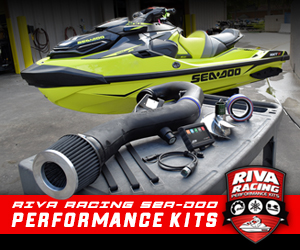In the course of a single year, the Yamaha FX SVHO WaveRunner has become the most successful full-sized 3-seater runabout in professional racing. Since its 2019 redesign, the FX SVHO and smaller GP1800R were the ONLY two machines ridden by competitors in the Pro Stock class at this year’s IJSBA World Finals. That fact alone is absolutely astounding.
Whether cutting hairpin turns around a buoy or slamming through open ocean waves, more of the world’s top athletes have chosen the FX SVHO WaveRunner than any other watercraft. And while certainly most of us will never find ourselves competing for a National Championship, it’s incredible to know that this one Yamaha can take whatever you or I could throw at it.
Don’t believe it? Well, you could watch as we took a spin on 10-time National Champion Brian Baldwin’s P1 AquaX-winning, 83mph ’19 FX SVHO last month; in its current trim, Baldwin’s FX did its very best to peel us from its seat as we viced the throttle through break-neck U-turns. And yes, Baldwin’s Yamaha remains a full-sized, stock-weight 3-seater; there’s no Sneaky Pete trickery here.
So in light of this killer resume, what could Yamaha do to make the 2020 FX SVHO any better? They painted the whole damn thing black. From head-to-toe, the 2020 FX SVHO is soaked in a two-tone combination of mirror-like camera obscura gloss and textured flat black, making this WaveRunner worthy of recently acquired nickname, “Darth Vader.”
Although half expecting to hear the famous mechanical breathing of the Star Wars baddie hissing from beneath its stealth bomber appearance, little else has been changed from last year’s model. Alas, one key update went almost entirely unsung: Yamaha did upgrade its jet pump to incorporate a new replaceable stainless steel wear ring all into a single, larger 160-millimeter housing.
Additionally, the new 2020 SVHO pump is a true 160mm. According to Jerry Gaddis at Greenhulk.net, “Previous SVHO pumps used a 155mm stator and a 160mm impeller and liner. Having a true 160mm stator will greatly improve cavitation problems that we have previously seen and it will also improve rough water hookup.”
The supercharged-and-intercooled 1,812cc Super Vortex High Output engine remains the same for 2020, still delivering reliable fly-by-wire performance from the industry’s largest-displacement 4-cylinder four-stroke that has earned so many accolades over the past year.
For 2020, Yamaha’s Accessory Group worked together with EcoXgear to completely redesign their Waterproof Wireless Bluetooth Speakers, upping the wattage to 60-watts (double from last year’s 30-watts) and are available with a suggested retail price of $399.
But if you’re really looking for face-melting, in-concert level sound, Yamaha does offer an exclusive JL Audio System. Our test unit for today came to us boasting a 600-watts, 4-channel amp ready to blast our tunes (fed via your BlueTooth device) through two pressure-washer safe, waterproof footwell speakers.
Priced at $1,800, this dealer-installed option is best paired with the available 8-inch subwoofer kit, which goes for an additional grand. It’s also important to note that when the dealer installs your subwoofer it’s gonna eat up all the room that was the FX’s huge watertight glove box.
Instead, you get a preformed molded pocket big enough to hold maybe a wallet or a set of keys, and includes a 12-volt outlet. So there’s a bit of a trade there. But, and I want to emphasize this as clear as possible, the JL Audio System exclusive for the Yamaha FX is without a doubt, the clearest, most powerful, brain-melting sound system available on the market today.
When optioned without the subwoofer, the standard FX SVHO touts an impressive 44-gallons of combined total storage, divvied up between the massive stepped bin in the bow (molded to accept a huge soft-sided cooler available through Yamaha Parts & Accessories), a watertight tub under the passenger’s seat, the wet storage cubby on the stern, and the aforementioned padded glovebox, which frankly, is a little hard to live without.
Upon ignition, the 4.3-inch Yamaha Connext dashboard flickers to life, providing the rider full control at a press or swipe of the finger – it is a touchscreen after all. Whether you’re looking for fuel consumption rates, miles to empty, or want to change the default language ,the gauges’ background color or insert the 4-digit security PIN number, it’s all there in seconds.
Controls for the electric trim are responsive and articulate the jet nozzle of FX’s redesigned pump to adjust the watercraft’s attitude to meet water conditions and speeds. On the opposite side are both Yamaha’s No Wake Mode and Cruise Assist, a welcomed feature despite being a non-Cruiser model. Both No Wake mode and Cruise Assist allow the rider to manually toggle the speed up or down using the right-hand arrows.
No Wake Mode’s default speed is 5 miles per hour, with an adjustment of 1 mile per hour either up or down. For Cruise Assist, you’re given up to 5 miles per hour of advancement or deceleration, before requiring to be reset to a different speed.
Two overlooked additions are the Reverse Assist and Thrust Directional Enhancer features; using the same right-hand toggles, Reserve Assist gives the rider a little extra oomph while backing up, ideal for when you’re backing off of the trailer bunks. The Thrust Directional Enhancer (or TDE) uses the trim arrows while set at neutral to give the rider the tiniest bit of forward or reverse thrust (without using the RiDE throttle levers) for maneuvering around a crowded dock or other tight confines.
Other features include CNC-cut two-tone Hydro-Turf mats that line the expanded rear swim platform and folding step, as well as cover the low-slung footwells with the industry’s only footwell drains. Note that the drains work via vacuum produced by the FX traveling forward and gravity, meaning they only drain when either underway or while out of the water.
Upon acceleration, the FX SVHO sprints out of the gate, reaching plane in seconds. It doesn’t launch violently or porpoise like other craft either; it’s power-to-weigh ratio is greatly helped by the Yamaha’s 818-pound dry weight. Made from proprietary nano clay and glass micro bubble materials, the NanoXcel2 process results in a durable, lightweight hull and deck that is also paintable and repairable.
The FX’s hull borrows much from the smaller GP1800R, relying heavily on lifting strakes and rounded chines to give the WaveRunner its natural, predictive tracking through all sorts of water conditions, as well as its smooth, instinctual inside-lean when thrown into a corner.
Stability at speed is key here, and the FX has it in spades. When under throttle, rider input is measured in millimeters, not inches. The FX doesn’t require big swings of the handlebars to snap a turn, or constant side-to-side steering to correct its path through chop. It’s as easy and point-and-shoot.
With its 18-and-a-half gallon fuel cell nearly topped off, we logged a respectable GPS top speed of 68.2mph at 840-feet above sea level under steely-gray 55-degree skies. Certainly, a lighter rider and lower elevation will garner superior results.
This adds up to the 2020 FX SVHO being without a doubt, the most aggressive, most spirited full-sized 3-seater runabout that Yamaha has offered; it’s recent racing pedigree is proof of this. And while the blacked-out livery is just…friggin’ awesome, it’s also almost indistinguishable from the rest of the water from a 100-feet away, so well, there’s that.
The NanoXcel2 hull and deck material is thinner than the slightly heavier NanoXcel (one) material used on the non-supercharged FX HO and HO Cruiser. That means its less absorbent to the bumps and bangs of riding full throttle over rough water. This should go without saying, but here I am, having to say it. While the FX SVHO can streak across the water, you’re gonna feel it a lot more than a thicker, heavier ski. That’s just how things work.
With an MSRP of $15,699, it’s one of Yamaha’s more premier WaveRunners, so I strongly recommend optioning for the versatile RAM mounts so you can switch between an optional cup holder or GPS mount – that is, if you don’t go for the massive JL Audio package and want new EcoXgear speakers that fit in the cup holders. Again, Yamaha leaves it all up to you.
In a rare instance of showing overt personal bias, the 2020 FX SVHO is just one of my plain favorite watercraft. It’s comfortable to ride casually, and can get up and scream when you clamp the throttle. It tracks straight, it goes where you point it and can out-handle machines making much more horsepower and with less seating. And dang, does it look mean just sitting there. I mean, c’mon! Just LOOK AT IT!






